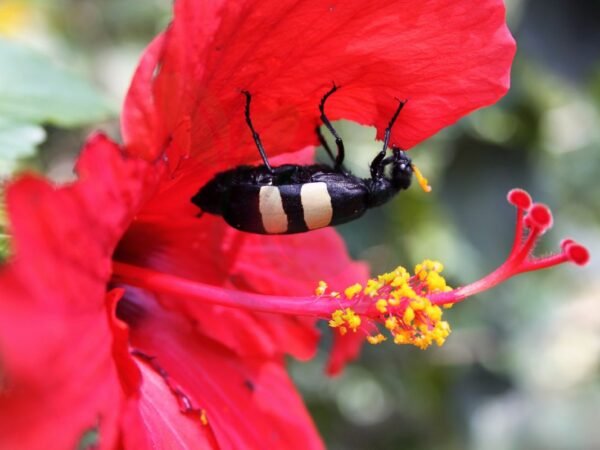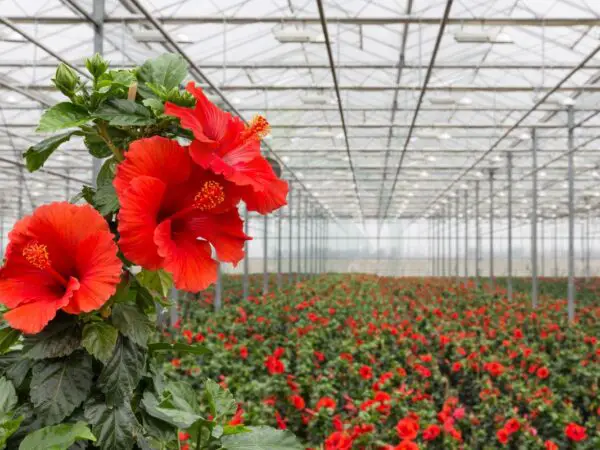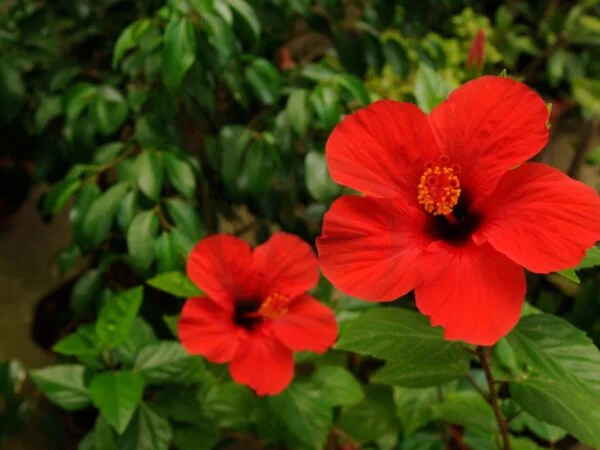Ever wondered how you can multiply your favorite hibiscus plant without spending a fortune with outdoor cultivation? Cloning hibiscus through stem cuttings is an easy and cost-effective way to expand your gardening, grow new plants, or share the beauty with friends. In this guide, we'll explore simple steps to successfully clone your hibiscus plants at home using stem cuttings. From selecting the right cutting to providing optimal care, you'll soon have flourishing clones adding vibrant colors to your garden.
Discover the secrets to multiplying your hibiscus collection effortlessly and enjoy an abundance of these stunning flowers in no time. Get ready to unlock the art of cloning hibiscus plants and watch your garden bloom with life!
Key Takeaways
-
Choose healthy parent plants with desirable traits for successful hibiscus cloning.
-
Utilize proper cutting techniques to ensure the best chances of successful root development.
-
Experiment with different rooting methods like water propagation or soil propagation to find what works best for your hibiscus clones.
-
Pay attention to environmental conditions such as temperature, humidity, and light during the cloning process.
-
Provide ongoing care to your hibiscus clones by monitoring watering, fertilization, and pest control regularly.
-
Monitor the progress of your hibiscus clones closely to address any challenges or issues promptly.
Hibiscus Cloning Overview
Benefits
Cloning hibiscus plants offers exact replicas of the parent plant, maintaining desirable traits like color and size. This method ensures consistency in your garden's aesthetics.
Moreover, cloning hibiscus allows you to propagate your favorite varieties without relying on seeds, ensuring genetic purity. This process also accelerates the growth cycle, providing quick results.
Best Seasons
For successful hibiscus cloning, opt for spring or early summer, when plants are actively growing. During these seasons, hibiscus exhibits robust growth and is more receptive to propagation techniques.
Choosing the right season is crucial as it influences the success rate of hibiscus cloning. Avoid attempting this process during winter when plants are dormant to ensure optimal results.
Required Tools
To clone hibiscus successfully, gather essential tools such as sharp pruning shears for precise cutting. You'll also need a rooting hormone to encourage root development in the new cuttings.
Prepare a suitable potting mix rich in nutrients to promote healthy growth. A clear plastic bag or dome can create a humid environment, aiding in root formation for the cloned hibiscus plants.
Choosing Parent Plants
Health Assessment
When selecting parent plants for cloning, ensure they are free from diseases and pests. Conduct a thorough inspection to identify any issues. Look for signs of yellowing leaves, wilting, or unusual spots that may indicate poor health. It's crucial to choose healthy parent plants to ensure successful cloning.
Flower Quality
Focus on selecting parent plants with vibrant and healthy flowers. Look for characteristics such as bright colors, large petals, and overall attractiveness. These traits will be passed down to the cloned plants, ensuring beautiful blooms in the future. Avoid choosing parent plants with dull or damaged flowers.
Growth Patterns
Consider the growth patterns of the parent plants when choosing them for cloning. Observe how quickly they grow, their size, and overall vigor. Select plants that exhibit strong growth patterns as these traits will be inherited by the cloned plants. Avoid choosing weak or stunted parent plants as they may not produce healthy clones.
Cutting Techniques
Stem Selection
When selecting stems for cloning hibiscus, opt for healthy ones without any signs of disease. Look for stems that are green and firm to the touch.
Choose stems that have a diameter of about a quarter of an inch, as these are ideal for successful hibiscus propagation. Avoid using thin or weak stems.
For the best results, select stems that come from parent plants with vibrant blooms and robust growth. These characteristics indicate the stem's potential for successful cloning.
Cutting Length
Cut the selected stem at a length of around four to six inches using sharp, sterilized shears. Make the cut just below a leaf node to encourage new growth.
Ensure that each cutting has at least two to three sets of leaves on it. This ensures that there are enough nutrients and energy reserves for the cutting to establish roots successfully.
Trim off any flowers or buds present on the cutting, as these can divert energy away from root development. Focusing on root growth initially is crucial for successful hibiscus cloning.
Leaf Trimming
Trim the leaves on the lower half of the cutting, leaving only one or two sets at the top. This reduces moisture loss through transpiration and directs energy towards root formation.
Leaves play a vital role in photosynthesis, providing energy for plant growth. By trimming excess leaves, you help balance the plant's need for energy between root development and foliage growth.
Excessive foliage can lead to wilting and hinder root development in cuttings. Maintaining a balance between foliage and roots is essential for successful hibiscus propagation.
Rooting Methods
Water Rooting
To propagate hibiscus through water rooting, begin by selecting a healthy stem cutting. Remove the lower leaves and place the cutting in a jar of water. Change the water regularly to prevent rotting and wait for roots to develop.
For successful water rooting, ensure the cutting receives indirect sunlight. Roots typically appear within 2-6 weeks, signaling readiness for transplanting into soil. This method is ideal for beginners due to its simplicity and visibility of root growth.
Soil Rooting
Soil rooting involves planting hibiscus cuttings directly into a well-draining potting mix. Dip the cut end of the stem in rooting hormone before inserting it into the soil. Maintain moisture levels by misting the cutting regularly.
One advantage of soil rooting is that it allows for quicker establishment of roots compared to water propagation. Ensure the soil remains consistently moist but not waterlogged to support healthy root development.
Use of Hormones
When propagating hibiscus, using hormones can expedite root formation and increase success rates. Hormones stimulate cell division, promoting robust root growth and overall plant health. There are two types of hormones commonly used: natural and synthetic.
Natural Hormones
Natural hormones, such as indole-3-butyric acid (IBA), occur organically in plants and aid in root development. These hormones mimic naturally occurring growth processes, enhancing the cutting's ability to produce roots rapidly.
To apply natural hormones, dip the base of the cutting in a powdered form before planting it in soil or water. This method boosts root initiation and ensures vigorous root growth, leading to stronger plants.
Synthetic Hormones
Contrastingly, synthetic hormones like NAA (naphthaleneacetic acid) are artificially created compounds that exhibit similar effects on root stimulation as natural hormones. They are available in various concentrations tailored to different plant species' needs.
Utilize synthetic hormones by following manufacturer instructions for dilution and application methods. These hormones provide a reliable way to enhance root development in hibiscus cuttings, especially when dealing with challenging varieties.
Potting and Planting
Pot Selection
When selecting pots for cloning hibiscus, opt for containers with drainage holes to prevent waterlogging. Choose small pots to accommodate the young hibiscus clones, promoting healthy growth.
Consider using plastic pots for their lightweight properties, making it easier to move them around. Avoid clay pots as they tend to dry out quickly, requiring more frequent watering.
Soil Mix
For an ideal soil mix when cloning hibiscus, blend equal parts of potting soil, perlite, and peat moss. This mixture ensures proper drainage while retaining moisture crucial for root development.
The perlite in the mix aids in aeration and prevents compaction, promoting healthy root growth. Peat moss provides essential nutrients and retains moisture necessary for the young clones.
Planting Depth
When planting hibiscus clones, ensure the planting depth is shallow to encourage root establishment near the surface. Placing the cutting too deep can hinder root development and lead to rotting.
Aim to plant the hibiscus clone with at least two nodes buried beneath the soil level. This promotes the emergence of new roots from these nodes, aiding in the establishment of a robust root system.
Environmental Conditions
Lighting Needs
Hibiscus plants thrive in full sunlight, requiring at least six hours of direct sunlight daily. Position them near south or west-facing windows for optimal growth.
Maintain a distance of about two feet between the plant and the window to prevent leaf scorching from intense sunlight exposure.
Temperature Control
Hibiscus plants prefer temperatures between 60-90°F during the day and slightly cooler nights around 55-65°F for optimal growth.
Avoid exposing hibiscus plants to temperatures below 50°F, as they are sensitive to cold and may suffer damage or stunted growth.
Humidity Levels
Maintain a humidity level of around 50-60% for hibiscus plants, especially during dry seasons or in indoor environments.
To increase humidity, consider using a humidifier, placing a tray filled with water near the plant, or regularly misting the leaves with water.
Ongoing Care Tips
Watering Routine
Maintaining a consistent watering routine is crucial for the health of your cloned hibiscus plants. Ensure the soil remains moist but not waterlogged, as excessive water can lead to root rot.
To determine when to water, stick your finger into the soil about an inch deep; if it feels dry, it's time to water. Water thoroughly, allowing excess water to drain out of the pot's bottom.
Fertilizing Schedule
A balanced fertilizing schedule will promote healthy growth and vibrant blooms in your cloned hibiscus. Apply a high-phosphorus fertilizer every two weeks during the growing season to encourage flower production.
Avoid over-fertilizing, as this can damage the plant. Always follow the recommended dosage on the fertilizer packaging to prevent nutrient burn.
Pruning Practices
Regular pruning is essential to keep your cloned hibiscus looking tidy and encourage new growth. Trim back any dead or damaged branches using sharp, clean pruning shears.
Prune after flowering season to shape the plant and remove any weak or overcrowded stems. This will stimulate fresh growth and ensure a bushy, healthy plant.
Common Challenges
Pest Issues
Pests like aphids and spider mites can infest hibiscus plants, causing damage to the leaves and flowers. These pests suck sap from the plant, leading to wilting and yellowing of the foliage. To combat this, regularly inspect the plants for any signs of pest infestation.
-
Use insecticidal soap or neem oil to control these pests effectively.
-
Encourage natural predators like ladybugs and lacewings to keep pest populations in check.
Disease Prevention
Hibiscus plants are susceptible to fungal diseases such as powdery mildew and leaf spot. These diseases can result in discolored patches on the leaves and stunted growth. Ensure proper air circulation around the plants by spacing them adequately.
-
Avoid overhead watering to prevent fungal spores from spreading.
-
Remove and destroy any infected plant parts to prevent further spread of diseases.
Environmental Stress
Extreme temperatures, both hot and cold, can stress hibiscus plants, affecting their overall health. During heatwaves, provide adequate shade for the plants to prevent sunburn on the leaves. In colder climates, consider moving potted hibiscus indoors during winter months.
-
Mulch around the base of the plant to regulate soil temperature.
-
Water hibiscus plants deeply but infrequently to promote deep root growth.
Propagation Success Monitoring
Growth Tracking
Monitor the growth of your cloned hibiscus by measuring its height and spread weekly. Keep track of any significant changes in size.
Observe the color and texture of the leaves for signs of new growth. Vibrant green leaves indicate healthy development.
Measure the number of new branches sprouting from the main stem to ensure successful propagation. Increased branching signifies progress.
Health Indicators
-
Check for pests like aphids or whiteflies regularly.
-
Inspect the underside of leaves for any signs of infestation.
-
Ensure proper watering to prevent wilting or yellowing of leaves.
Blooming Patterns
-
Note the time it takes for your cloned hibiscus to produce its first flower.
-
Keep track of the frequency and duration of blooming cycles.
-
Observe any variations in flower color or size compared to the parent plant.
Closing Thoughts
You've now learned the ins and outs of cloning hibiscus plants successfully. By selecting the right parent plants, mastering cutting techniques, understanding rooting methods, and providing optimal care, you're well on your way to propagating healthy hibiscus offspring. Remember to monitor their progress closely and address any challenges that may arise promptly.
Take the knowledge you've gained here and put it into practice. Share your newfound expertise with fellow gardening enthusiasts or embark on your own hibiscus cloning journey. With dedication and the right techniques, you can enjoy a garden filled with vibrant hibiscus blooms that you've propagated yourself.
Frequently Asked Questions
How important is choosing the right parent plant for hibiscus cloning?
Choosing healthy parent plants with robust growth ensures successful hibiscus cloning. Select disease-free specimens with desirable traits to propagate strong offspring.
What are the key cutting techniques for hibiscus cloning?
Utilize sharp, sterile tools to take stem cuttings from the parent plant. Make clean cuts just below a leaf node to encourage root development in the cutting.
Which rooting methods are effective for hibiscus propagation?
Popular rooting methods include placing hibiscus cuttings in water or directly into a well-draining rooting medium. Maintain consistent moisture levels and provide indirect light for optimal root growth.
How should I pot and plant hibiscus clones for best results?
Plant rooted hibiscus cuttings in well-draining soil mixtures in pots with drainage holes. Ensure the plants receive adequate sunlight and water them regularly to promote healthy growth.
What environmental conditions are ideal for hibiscus cloning success?
Maintain warm temperatures around 70-80°F (21-27°C) and high humidity levels during the initial stages of hibiscus cloning. Provide indirect sunlight and protect the young plants from drafts or extreme heat/cold.
What ongoing care tips are essential for successfully cloned hibiscus plants?
Continue monitoring water needs, ensuring proper drainage, and providing balanced fertilizer to support healthy growth. Regularly inspect for pests or diseases and address any issues promptly to maintain thriving hibiscus clones.
How can I monitor the success of my hibiscus propagation efforts?
Observe new growth, check for root development, and monitor overall plant health regularly. Look for signs of wilting, yellowing leaves, or stunted growth that may indicate issues needing attention in your propagation process.
Image Source: Paid image from CANVA




